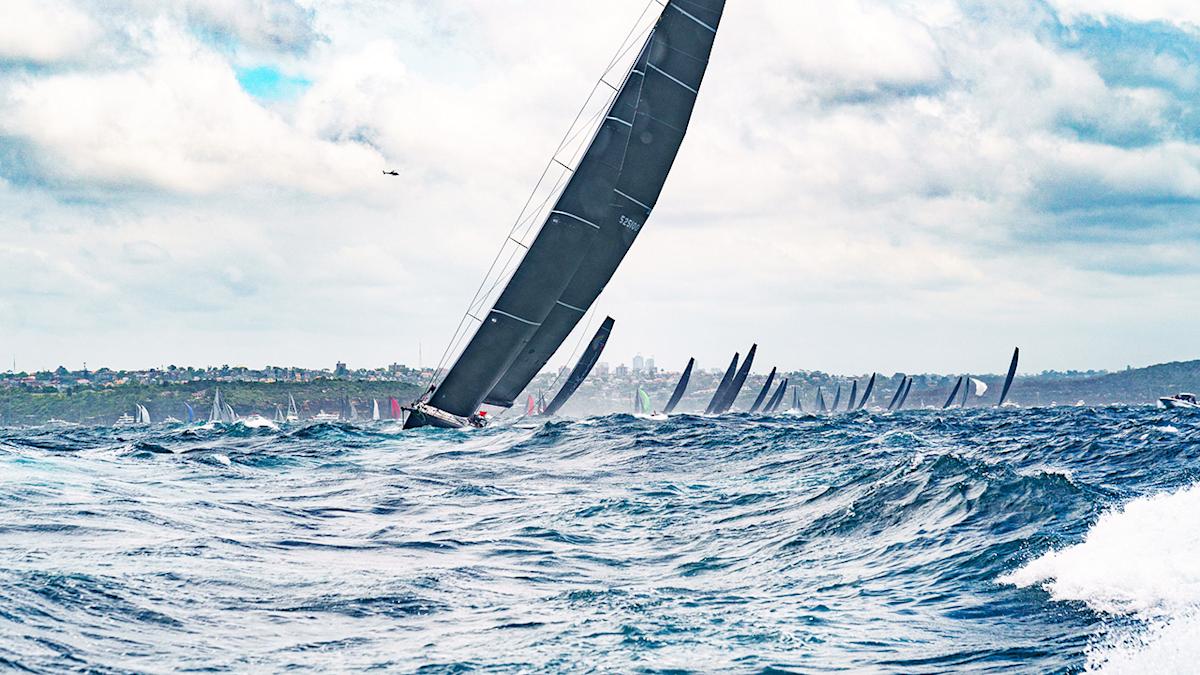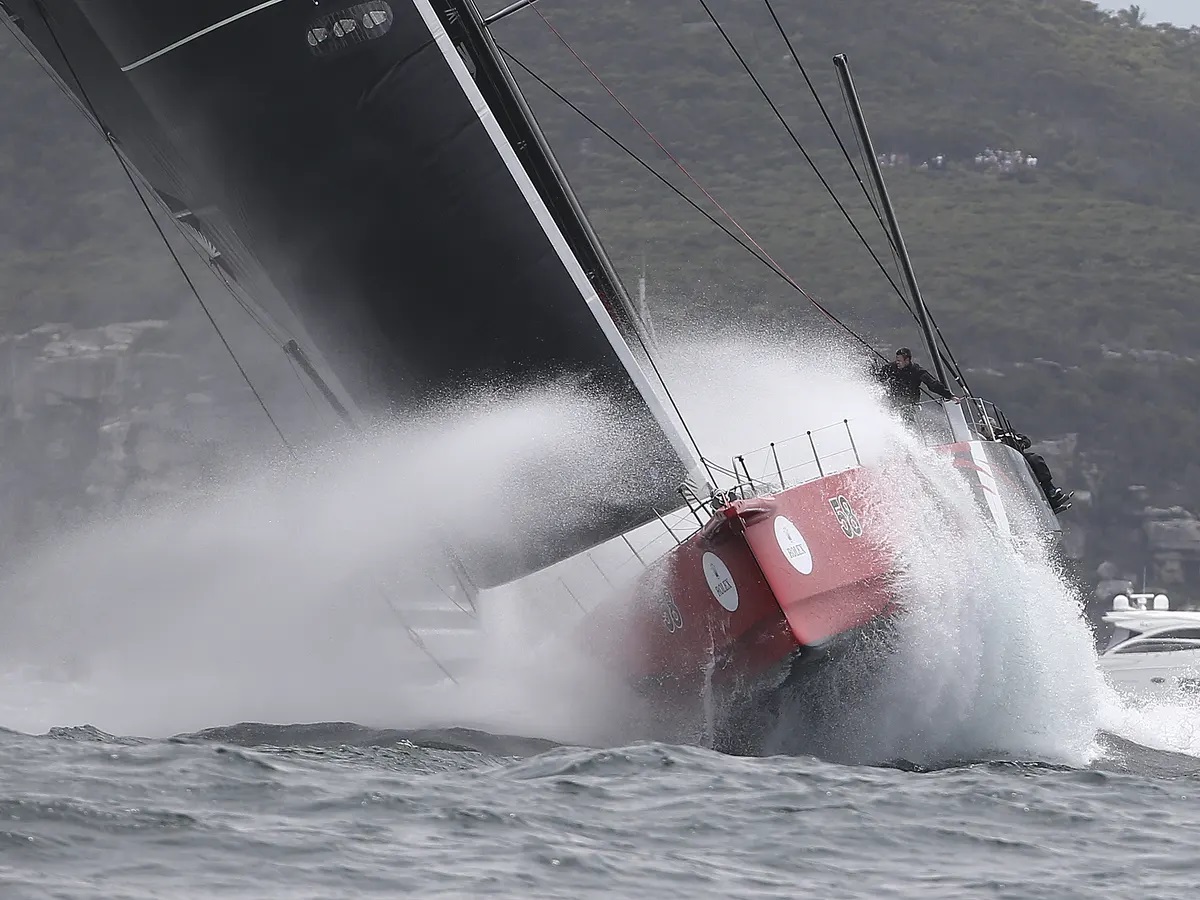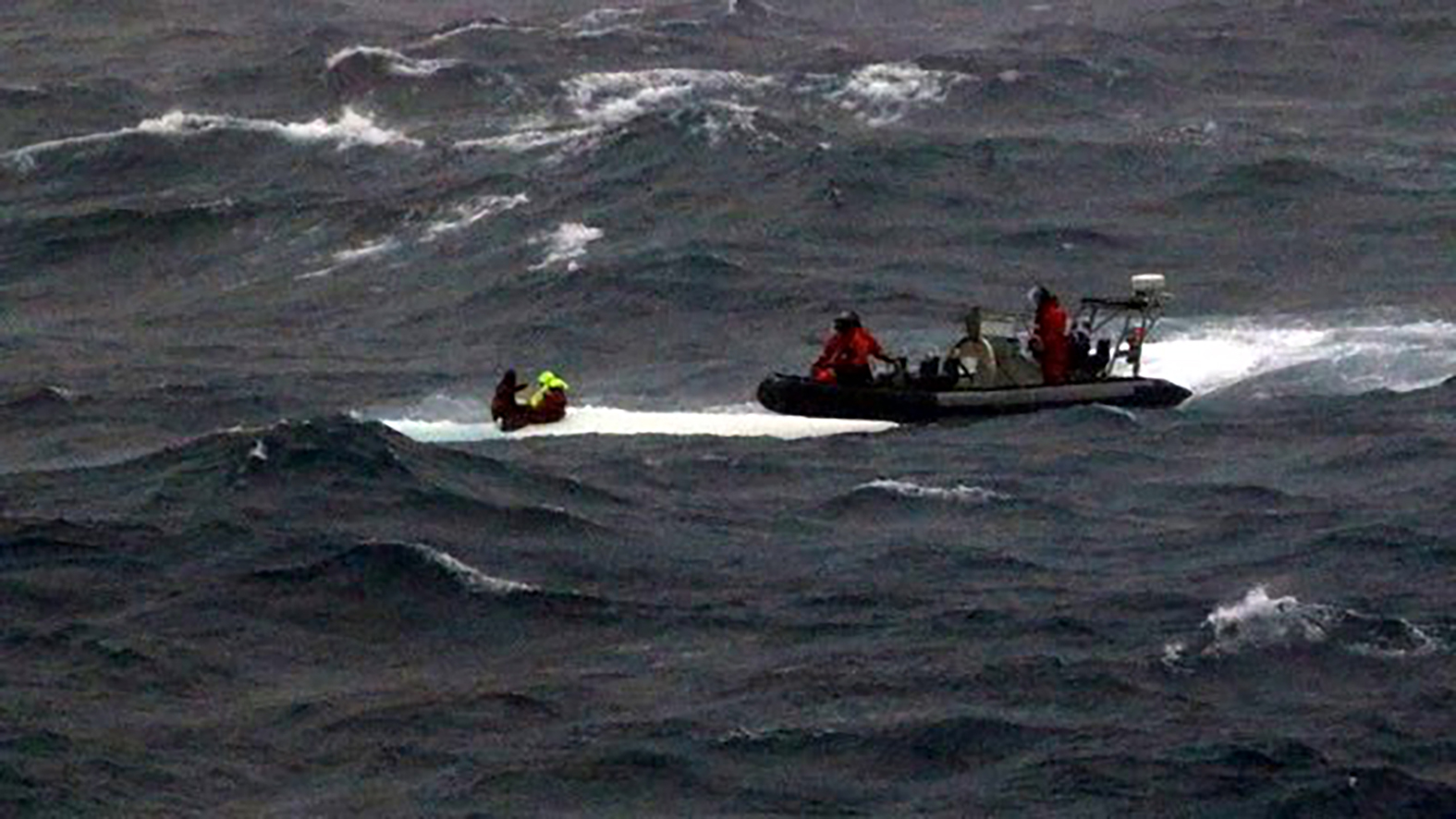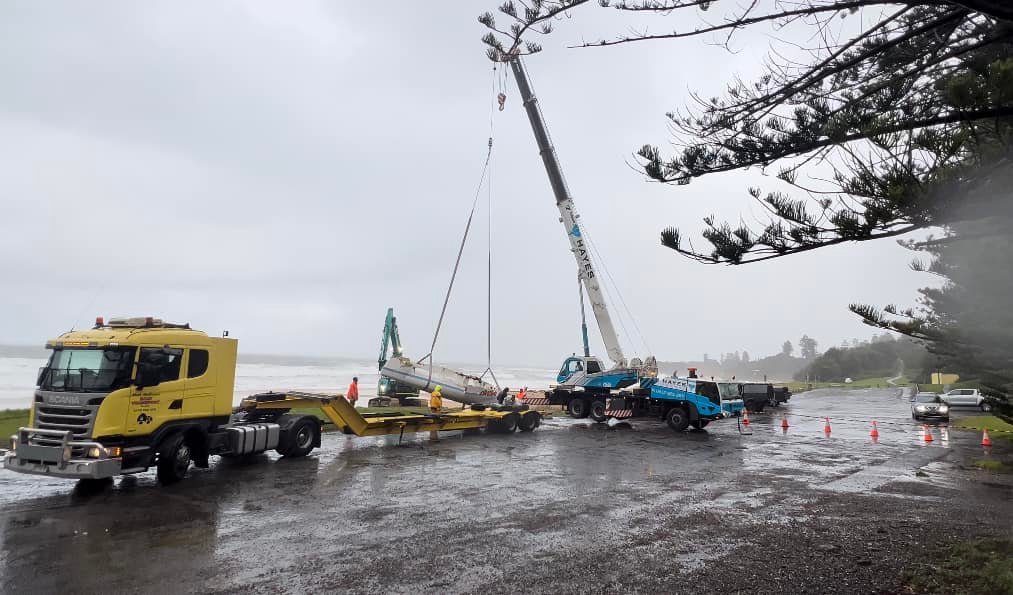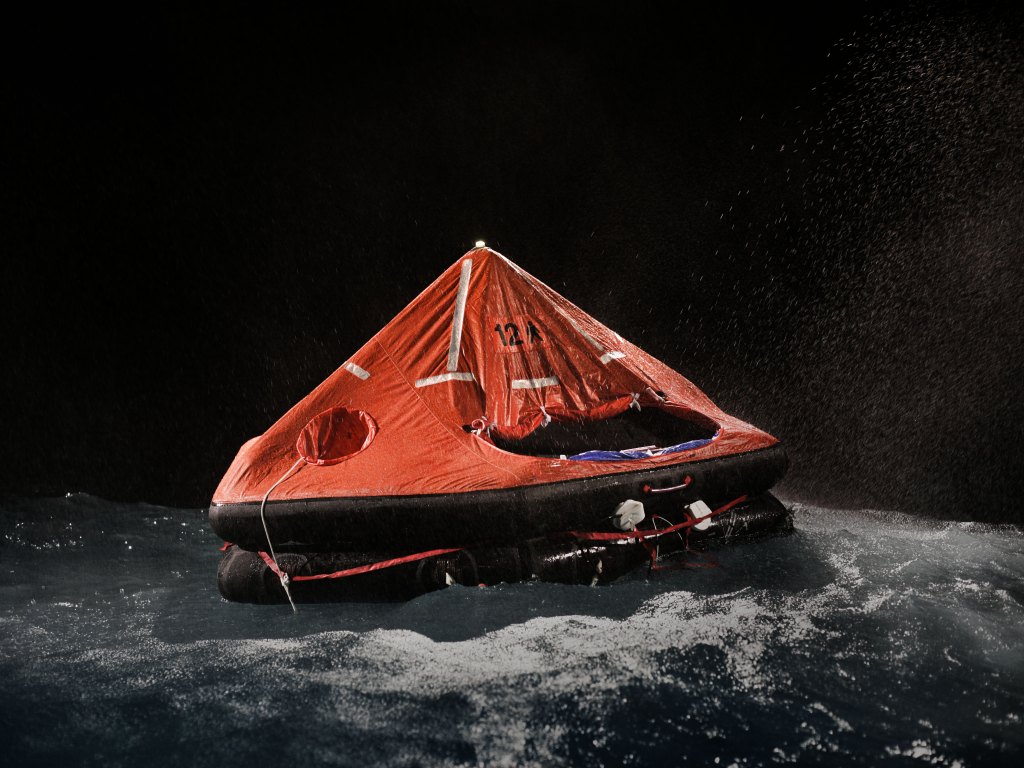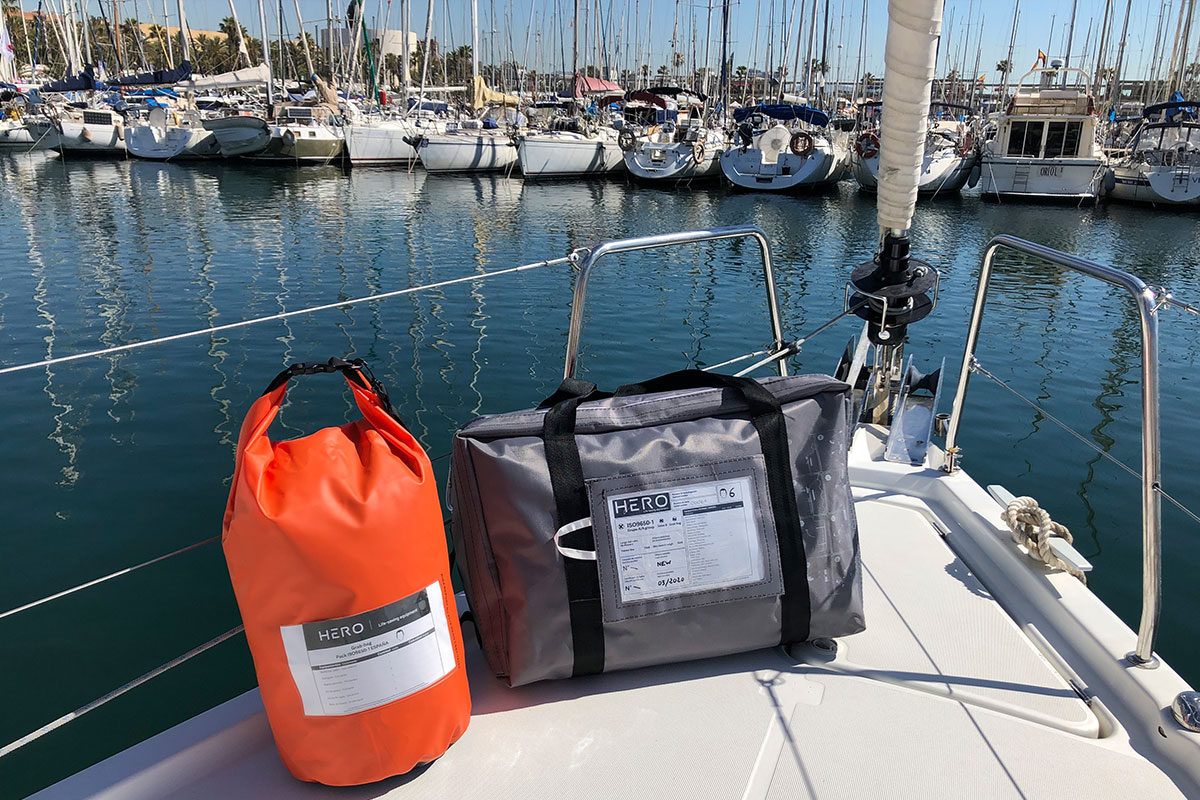Think it through
Esteemed sailing journalist, Blue Robinson recalls his own experiences with on-water incidents and what can be learned from them.
Written by Blue Robinson
02 August 2022
Advertisement
With investigations still underway to determine the facts behind the keel loss and rapid capsize of the Farr X2 Nexba Racing, it is too early to speculate on the reasons behind loss of the yacht – which fortunately resulted in the rescue of the two crew after 15 hours on the upturned hull.
What this incident did highlight however, is just how quickly things happen offshore, and so I wanted to focus on a few broader points about what happens when things go bang in the night – and what to expect thereafter.
Firstly, expect the unexpected. Some years ago, I was onboard Wild Oats X, on the delivery back from Hamilton Island race week to Sydney, when we hit a humpback whale which was sleeping on the surface at two o’clock in the morning.
It was a beautiful clear night, with a steady warm westerly powering us south at around 20 knots.
Advertisement
When the collision occurred, I was about to take over helming duties and so was at the stern – taking what Phil Liggett calls when he commentates on the Tour de France, “a natural break”, and so I was flung backwards onto the deck – from where I got a clear view of the rig flopping around above me like wet spaghetti, whilst the burly helmsman swore in a falsetto voice for about a minute.
Sitting up, I saw a massive circular plume of bioluminescence disappearing away from us at an angle underwater, which meant both the whale and I had a very sore rump. Luckily for all concerned it was a glancing blow – but what would have happened if we had been holed by an angry cetacean, smashing great chunks out of our thin carbon/Nomex honeycomb topsides with its muscular tail? The what-ifs are certainly worth thinking about.
First the physical stuff. Do you have the means at hand to alert the relevant authorities that the yacht is sinking after tearing a great gash in the hull at speed, following an impact with a container/large chunk of tree, or anything hard and heavy floating just under the surface?
Are you sure your onboard communications will work? Do you have a life raft handy – and what do you need to quickly remove it from its secure position and inflate it? When I say quickly, just remember how much water rushes into the boat when you replace a hull transducer – and that is a unit smaller than your fist taken out and replaced in seconds.
So how much water will get fired inside the boat from a jagged hole, say the size of a bucket – or much larger, located frustratingly behind a locker or under a pile of sails? How long do you think your bilge pump will keep running, and what happens if the rising sea water disables the power supply – or amongst the swirling, knee-deep, saltwater soup of sailing kit, sleeping bags and sail ties, something rapidly smothers and then jams the pump?
And what are you wearing and how cold will you be after you have got wet? Unless you are in a dry-suit, sitting in a life raft there is a very strong chance you will be wet, either from swimming to the raft or the water pooling around you where you sit – even with foul weather gear on.
Without any activity to generate heat it is not uncommon for people to start shivering pretty quickly – and some of them may be seasick, also quite quickly, due to the odd motion of the life raft and the shock at the events that have just unfolded.
Reports from Showtime, the Ker 40 which capsized on the delivery back from Hobart after the 2019 race, revealed that one of the crew members had to swim back into the upturned yacht to get the life raft, and so had to remove his lifejacket to do this – a complex manoeuvre, and according to delivery skipper Rob Buchanan, their survival was in part due to crew member Christian Charalambous, “doing one of the bravest thing I have ever seen, taking off his life jacket to head back under and get the raft.
“At the time the boat was trying to kill everybody, as it was banging around as we were holding onto it – it even knocked out one crew member,” he recounted.
I have had the illuminating experience of being rescued three times. Once off the rocky coast of Jersey where I grew up, once in the north Atlantic and once in the Irish Sea in 1979. Looking back at each incident, there were moments when some people around me simply went to pieces.
Sometimes, the body and mind are just too overwhelmed to be able to take any more information. I also remember asking a fellow crew member to tie a bowline at a challenging time at 3am, during a hurricane in the North Atlantic onboard the 80’ Fife Halloween, as we were furiously engaged in a fight to keep the mast upright.
I had just climbed into a bosuns chair, and was about to be hoisted aloft, to reconnect the shrouds which had parted from our leeward spreaders when we were falling off small dark mountains, and so I needed a downhaul attached to the base of the chair to try to limit the scope of my swing.
I kept asking him to do this, leaning close to his ear and repeating the plan as the horizontal rain roared in – but the noise and sheer violence of the conditions around us caused my colleague to seize up, and his brain just couldn’t register what I was asking him to do.
The emergency services and the military know this all too well – shock causes people to freeze and they might be able to see your mouth moving but they simply cannot comprehend what you are saying. So, if there is a serious incident onboard – how are you going to communicate with a crew member who is in shock?
This I think is part of the crisis management plan that often gets overlooked. If someone is cold or injured, shock sets in very quickly. Going from a solid and steady routine – often with a bit of adrenaline accompanying the surfing downwind or blast reaching, to suddenly being confronted by masts, rudders or keels parting company affects people in different ways.
Peter Kelly, a search and rescue officer at the Australian Maritime Safety Authority, who has given the Rolex Sydney to Hobart race safety briefing referred to this. With a roomful of America’s Cup, Volvo and Olympic sailors, he reminded all present that the issues are often not with the event itself – as the top race crews have experienced all sorts of hi-modulus mishaps – but it is the delivery crews returning the boats back home who often stumble.
They may not know the boat particularly well, are regularly down on numbers, and often have time pressures to get the boat back home. Sometimes, they have also borrowed personal location beacons which show up someone else’s details on the screens when activated, confusing those at rescue HQ.
I am sure plenty of thought on most yachts goes into recovering a crew member from over the side, but how would you actually do it, when did you last try it – and most importantly, where are the MOB buttons on board and how long do they have to be pressed before they activate? Forgive me for asking, but are you absolutely sure about that?
For the actual recovery, somewhere like Sydney Harbour is not too complex, with a crew member often in shorts and t-shirt, but what about offshore conditions – with sodden foul weather gear, boots and PFDs worn.
It’s not an easy one, particularly if they are injured – and the longer they stay in the water close to the hull in a swell as occurred with the Ker 40 Showtime, the greater chance that crew member has of getting impacted – most likely with a head injury, which instantly multiplies your problems.
One of the best safety briefings I ever heard was from skipper Chris Sherlock onboard Mike Slade’s Maxi Leopard 3. The boat was in Sydney preparing for the Hobart that year, and we had race crew and some guests out for the session.
Chris gathered us in the cockpit as we were motoring out and pointed out the safety gear, then focused on what would happen if someone fell over the side, and his key point was “Do not jump over the side with them!
“If someone goes in the water, raise the alarm and point to the person. The permanent crew will deal with it quickly – and we absolutely do not want two bodies in the water.” Sound thinking, and a strategy voiced clearly and concisely to those onboard who were new to the boat.
I have sailed with a friend here in Sydney for 20 years, and he smiles when he tells people he knows exactly what I do whenever a serious issue starts unfolding offshore; I get some hot water going on the stove. Either I do it, or I ask someone who has that faraway look in their eyes following the sound of carbon splintering out on deck.
From experience this does two things; it gives them something positive and simple to do, and if we do have to step up into a life raft, rapidly cut the painter, and then try to move the raft, with half a dozen crew smartly away from a sinking vessel using paddles the size of table tennis bats, at least we all have a mouthful of hot drink in our stomachs to keep us going.
The other useful thing I have learned from grim circumstances is the power of the Spanish windlass. Yep, that strange twisting thing with rope. When you are falling off large and steep waves and bits of your boat are acting like the San Andreas fault and moving noisily away from you, the Spanish windlass is gold.
With the high-strength rope now standard on yachts, there is immense binding power achieved very simply and quickly. Form a loop through two parts of the separating structure, put a winch handle or section of sail batten in between the two ropes, and start twisting.
It is easily re-located and repeated, (I remember during one winter North Atlantic crossing the forepeak looked like the inside of a harpsichord…) and fitting these has the added power of keeping hands busy, and giving the crew – again some of them with large Bambi eyes, something positive to do in an emergency – which is always a good thing.
So, think through the possibles and probables of situations happening at 3am, when half the crew are asleep in lightweight thermals, and what your reaction would be, plus what tools do you have, both mentally and physically, to deal with it.
During the massive 2019/20 bushfires in Australia, we had to rapidly evacuate our home. During that terrifying time, l saw leadership emerging from unlikely areas, not always from people in positions of power.
It was the quiet talkers, those with experience who used the economy of words rather than filling the sound bites, to verbalise the wisdom to get folks through the short and long term issues, and doing what we all know is essential; not making a drama out of a crisis.
Advertisement
Advertisement
Advertisement


